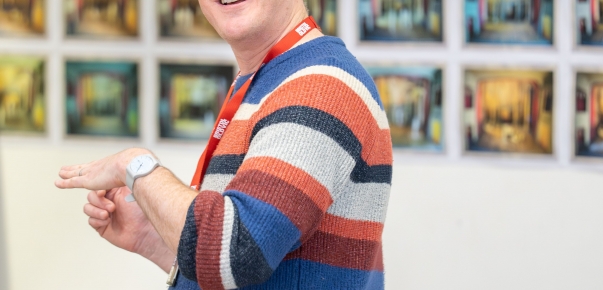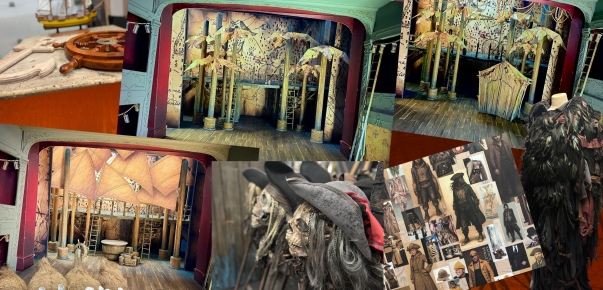LGBT History Month – Sarah Siddons
12 Feb 2018Alongside our ongoing HLF heritage project, we have been investigating Bristol Old Vic's dramas, both on and off stage, by seeking out archival evidence of individuals with diverse identities and bodies. LGBT History month felt like the ideal time to draw back the curtain and showcase some of our Theatre's lesser known history…
Sarah Siddons has long been heralded as an icon of 18th-century theatre: a regular player on the London stage, part of a theatrical dynasty, and a celebrated tragic actress. Renowned for her ability to depict complex emotions, she frequently performed Shakespearean roles; her famous depiction of Lady Macbeth was described as 'perfection' (Figure 2). However, her experimentation with gender and accolade as the first influential woman to play Hamlet is less well known.
In the 17th century the first professional actresses began appearing onstage, with breeches roles becoming a popular source of comedic entertainment. Some critics have argued that this cross-dressing enabled women to subvert gender roles, and to engage in the swaggering, rakish behaviour displayed by male performers. Yet others note that breeches roles actually increased the sexualisation of women, by allowing heterosexual male audiences a better view of actresses' legs. Moreover, breeches roles involve an actress adopting male garments as part of the narrative, and their comedic value lies in the imperfect impersonation of a male part – for example, Viola in Twelfth Night. Misconceptions often occur: other female characters often mistake the gender of a breeches character and fall in love with them, but everyone returns to their original gender and is usually romantically involved with a partner of the opposite sex by the end of the play.
In contrast, cross-dressing roles are sustained throughout a performance and are the choice of the actor, not the character. Siddons' decision to play Hamlet is a deliberate choice that enabled her to explore the constructed nature of gender onstage and off it. Celestine Woo's work describes Siddons' performances as Hamlet in detail. She notes that Siddons ‘performed the role of Hamlet nine times over thirty years', meaning it was not an anomaly. Though Siddons never played Hamlet on a London stage, she depicted the role at major venues in the provinces including Dublin, Manchester and – of course – at the Bristol Old Vic, then the Theatre Royal, Bristol.



So how did Siddons expose the way gender is performed and constructed? Woo describes how Siddons' costume choice helped destabilise traditional gender roles. Her argument is based on a fan's watercolour drawing of Siddons' Hamlet from her Dublin performances in 1802 and 1805 (see Figure 4).
By eschewing breeches, Siddons ignores the usual marker of onstage masculinity. Instead, the flash of leg from underneath the black toga which otherwise hides her female contours adds a risqué element to an otherwise androgynous outfit. Combining details socially-recognised as feminine – the white lace, feathered plume, floral brooch and soft fringe – with a phallic sword, Siddons simultaneously denies the fetishization normally endorsed by a breeches role and highlights the reliance on gendered props to help convey gender to an onlooker or audience.
Though her performance received mixed reactions, Siddons cross-dressing in this way enabled a woman to play Hamlet seriously. Performing such an iconic role expanded the possibilities for female actors in the 18th century, and drew attention to the instability of gender by mixing male and female symbols through costume. Whilst Siddons is rightly remembered for her nuanced performances of women, her experimentation with gender paved the way for further female Hamlets and for women to depict male characters outside of comedy. That she played Hamlet on the Bristol Old Vic's stage is a fact that should be shared just as much as her appearances in traditionally female roles.


